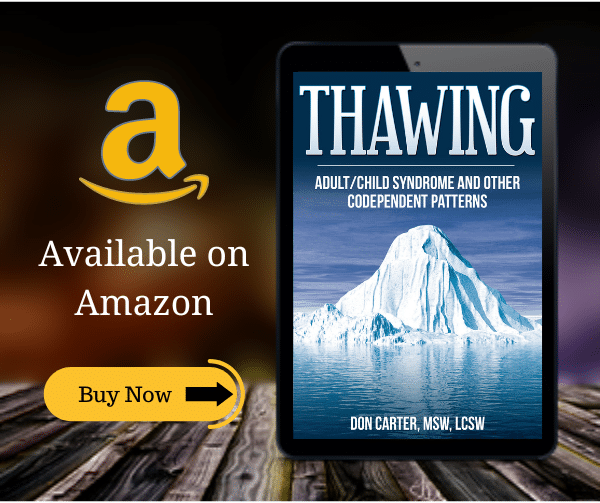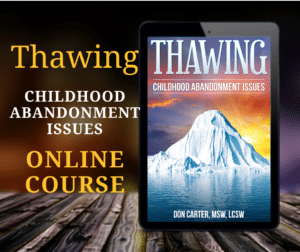
Define Intimacy vs. False Intimacy

Jung implies until & unless healing occurs in those patterns and cycles of woundedness created in one’s original relationships one is destined to repeat them. He was right, we tend to attract and unconsciously select someone with our same level of woundedness – someone who knows how to “dance the dance” we learned in our family of origin.
Define Intimacy with the Figure Eight:
If you have ever asked yourself, “How does this keep happening to me” in regards to your history of relationships, you now have the answer – you were programmed for it.
ABC’s and the Figure Eight
Beneath the waterline of awareness in the Iceberg Model lies the emotional woundedness of abandonment, shame, and contempt. The abandonment represents the original emotional wounds caused by unmet dependency needs, the shame is an emotional infection that sets in, and the “scab of contempt” represents all of the crusty feelings of anger, bitterness, & resentment that come from having to live this way.
“Wounded people, wound people” — below is an explanation of how and why we hurt the ones we love the most. The following is a general description of what happens when “two Icebergs are floating together in the same ocean”.

Two wounded people are in a relationship as represented in the diagram above. Something happens between them (A = Activating Event) that triggers the abandonment issues in one partner.
In a flash, the triggered partner inwardly experiences a cycle of abandonment, shame, and contempt (ASC) by making meaning of “what just happened” creating the B = Beliefs that come with the feelings of ASC. Such as “I’m not good enough, I’m not lovable, I’ll never be happy!”

The activating event coupled with the belief about the event (the meaning given to the event to define intimacy type) produces an emotional consequence = C1 (fear, sadness, anger, shame, etc.) the emotional consequence is followed by a behavioral consequence = C2 (usually Internalized or Externalized contempt). The diagram above shows what happens when the contempt is internalized — a vicious circle of ASC which results in depression (Anger turned inward…also known as frozen anger…aka “Acting-In”)
The diagram below shows what happens when the contempt is externalized (directed toward the other person — aka “Acting-Out”) It becomes the next activating event (A) which triggers a cycle of ASC in the second party.

In a flash, the second party internally cycles through his/her own feelings of abandonment, shame, and contempt — Makes meaning of what just occurred resulting in their own Belief (B), which leads to an emotional consequence (C1) (fear, sadness, anger, shame, etc.) followed closely by a behavioral consequence (C2) – Internalized or Externalized contempt. We eventually complete the loop or “Figure-Eight” creating a cycle of abandonment, shame, and contempt that has no end in sight until there magically comes a cease-fire.
When the cease-fire does come and the smoke clears there is usually more woundedness in wake of each episode than there was at the beginning of each cycle — worsening the woundedness. The only way to have a happy, healthy, successful relationship with another wounded person would be to heal the woundedness of ASC so that it shrinks up leaving room for the True-Self to the surface and a new opportunity to define intimacy anew.

To accurately define intimacy, someone once said, “True intimacy is the ability to share who you really are with another person. This implies the other person is also able to share who they really are with you.” One cannot share something they don’t have access to – the True-Self. Sharing from our woundedness, aka our False-Self, is more like identification than it is true intimacy.
In other words, I can identify with your pain and you with mine, but we don’t really get to know each other until we heal our wounds and get to know our True-Self. Until that happens we can only experience this sort of “False Intimacy” which — due to the intensity of it — can be mistaken for true intimacy.





